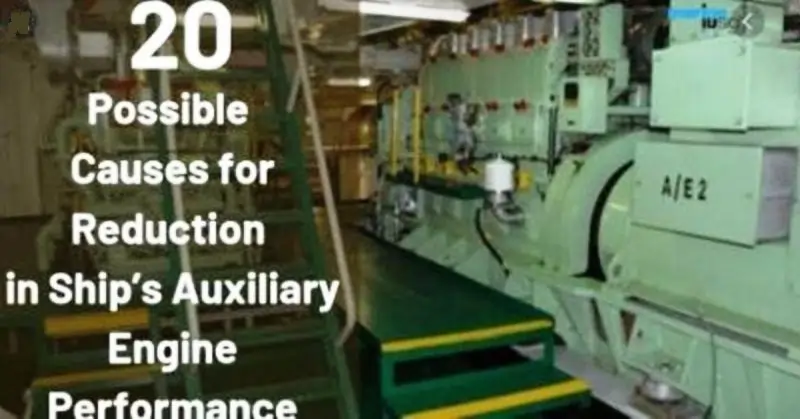Problem solving Tips for Diesel Engines
Diesel engines are renowned for their reliability and durability, but like any complex machinery, they can experience issues from time to time. Diagnosing and addressing these problems quickly is essential to prevent further damage and ensure the engine’s longevity. In this post on diesel engine troubleshooting for marine engines, we’ll provide practical tips to help you diagnose and resolve common issues.
We’ll cover key areas such as fuel systems, air systems, electrical systems, and cooling systems, offering preventative maintenance measures to minimize the likelihood of problems. Regular oil changes, filter replacements, and system checks are just a few steps you can take to keep your engine running smoothly.
Whether you’re a diesel engine mechanic, fleet manager, or owner, this post will provide valuable insights into diagnosing and addressing engine problems logically and systematically. We’ll also highlight the importance of accurate instrument readings and the necessity of proper calibration to avoid misleading indications. Follow these tips to keep your marine diesel engine in top condition for years to come.
Common Causes of Diesel Engine Troubleshooting
| Issue | Causes | Remedies |
|---|---|---|
| Abnormal Exhaust | Black Smoke: Inefficient combustion due to restricted air intake Blue Smoke: Lubricating oil in combustion chamber Grey Smoke: Injection timing issues, leaky valve seats, excessive water in fuel | Check turbocharger speed and air pressure Check air intake restrictions Adjust valve clearance Calibrate injectors Check fuel injection pump and timing Test fuel quality Maintain sump oil level Overhaul engine if necessary Calibrate injectors and check compression Drain water from fuel tanks regularly |
| Hard to Start | Low starting air pressure Malfunctioning main air starting valve Stuck starting valve Water in combustion chamber Air in fuel system Choked fuel filters Closed fuel line valves Unadjusted stop trip Low or no fuel in tank Faulty fuel injectors Wrong fuel timing Leaky fuel injection pipes Seized FIP plunger Stuck fuel rack Broken delivery valve Cold engine | Check and adjust air pressure Inspect and repair starting valves Clear fuel system of air Clean or replace fuel filters Ensure fuel lines are open Adjust stop trip Refill fuel tank Test and replace injectors Correct fuel timing Repair or replace faulty parts Warm up engine if cold |
| Lack of Power | Choked air supply Exhaust line restrictions Valve train wear Faulty fuel injection valve Insufficient fuel pump pressure Lack of compression Worn piston rings Carbon deposits on intake valves Leaky inlet valve Defective turbocharger Fouled charge air cooler | Clean air supply and exhaust lines Check and repair valve train Test and replace faulty fuel injection valves Ensure proper fuel pump operation Restore compression Replace worn piston rings Clean carbon deposits Repair or replace defective parts |
| Overheating | Defective instruments Malfunctioning alarms and sensors Air leakages Fuel leakages Malfunctioning fuel injection equipment | Test and repair instruments Fix or replace alarms and sensors Seal air and fuel leakages Service or replace fuel injection equipment |
| Lubricating Oil Pressure Drops | Choked oil filter Leaky/bypass valve Low oil level in sump | Clean or replace oil filter Repair or replace valve Maintain correct oil level |
| High Cooling Water Outlet Temperatures | Vapor lock in water line Low water pressure Choked PHE (Plate Heat Exchangers) Cooling water pump failure | Clear vapor lock Increase water pressure Clean or replace PHE Repair or replace cooling water pump |
| Engine Too Hot | Malfunctioning thermostatic valve Early injection Wrong fuel | Test and replace thermostatic valve Adjust injection timing Use correct fuel |
| Knocking at TDC | Early injection Wrong fuel | Adjust injection timing Use correct fuel |
| Foundation Bolts Cracking | Lack of maintenance High engine vibration Material failure | Regularly check and tighten bolts Reduce engine vibration Use high-quality materials |
Causes and Remedies for Diesel Engine Vibration
| Causes | Remedies |
|---|---|
| Unidirectional Combustion Forces | Ensure proper combustion by tuning the fuel injection system and maintaining the correct air-fuel mixture. |
| Changes in Gas Pressure Inside the Cylinder | Regularly inspect and maintain the cylinder and piston rings to ensure optimal gas pressure. |
| Structural Resonance | Use de-tuners to alter the frequency of vibrating machinery and reduce engine vibration. |
| Alternating Inertia Forces | Balance the engine components and ensure proper alignment to minimize alternating inertia forces. |
| Damaged or Compromised Propeller | Inspect the propeller for damage and replace if necessary. |
| Increased Vibration at Higher RPMs | Check the propeller and balance it properly; consider replacing if damage is severe. |
| Low Stiffness of Engine Structure | Fit side bracing on the top of the engine to increase stiffness and raise the natural frequency. |
| Measurement Using Accelerometer | Use a ceramic piezoelectric sensor or accelerometer to measure vibration accurately and address the causes. |
Blog Conclusion
We hope you enjoyed our post on | diesel-engine-troubleshooting. Since you’re a reader of this blog, we know that you are a Marine Engineer looking for help with your diesel engine. There are so many things you can do to increase your engine’s performance and lifespan, but the key thing is to find the best solution for the problem. This post is a great place to start the process of finding a solution and the blog post has blog post links for you for more information. Thank you for reading, we love hearing from our readers!
FAQ on ” Problem solving Tips for Diesel Engines”
What is the most common problem with diesel engines?
Overheating is a major issue for diesel engines
What makes diesel engines better?
Diesel engines usually offer better fuel efficiency compared to gasoline engines.
What color is diesel?
On-road diesel is usually transparent or slightly green in color
What color is bad diesel?
Regular, uncolored diesel fuel has a lovely amber-green hue.
